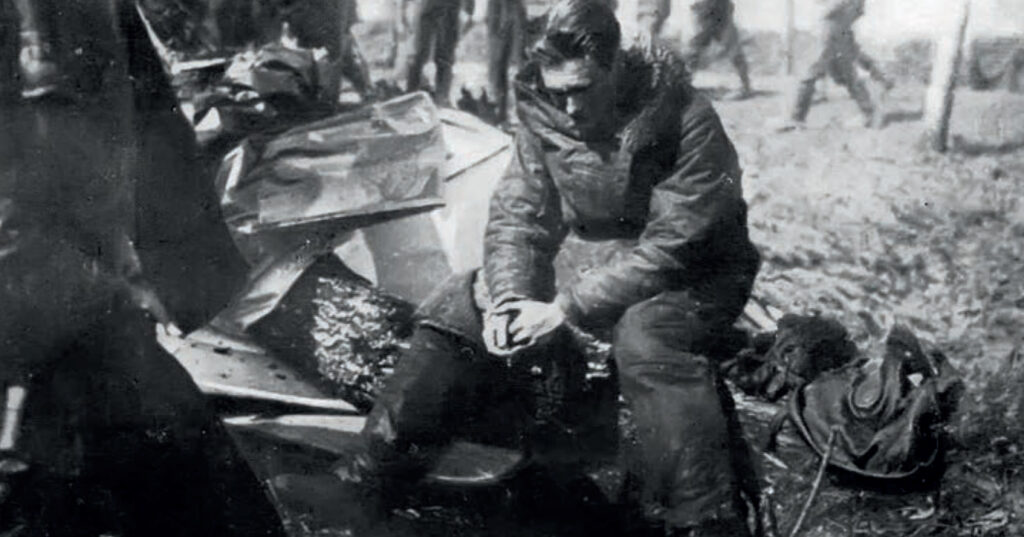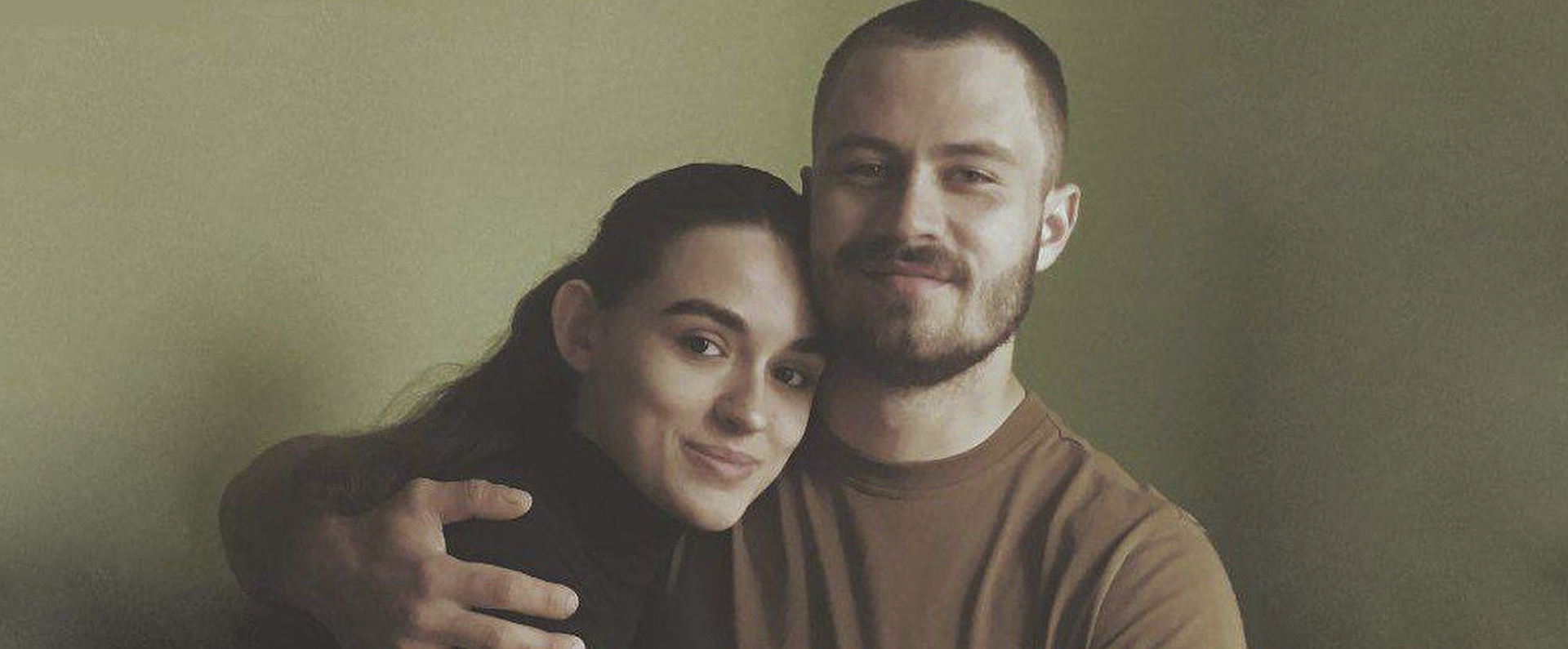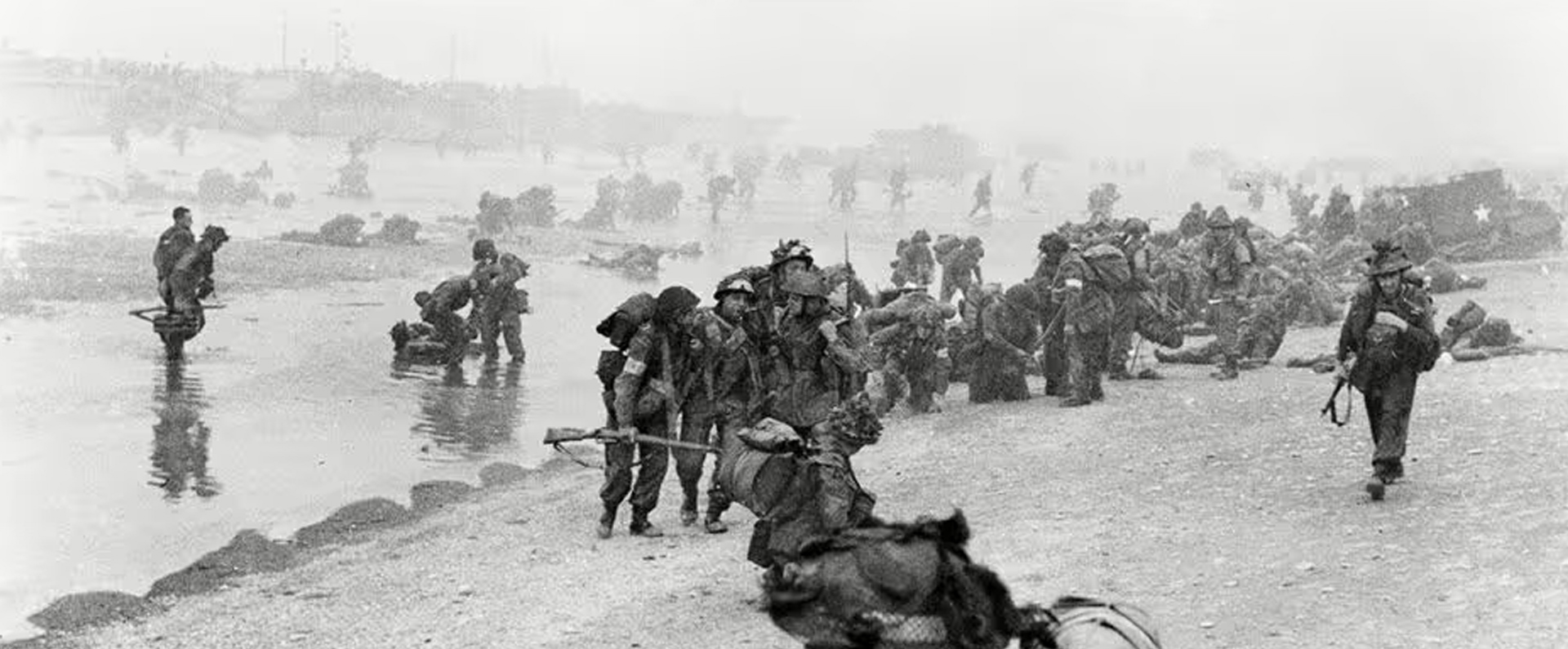
Published in Britain at War in February 2021.
Flight Lieutenant Alan Jerrard VC
Flight Lieutenant Alan Jerrard was known affectionately as the “Pyjama VC” because, when he was captured and taken as a Prisoner of War (PoW), he was wearing only his nightclothes beneath his bulky flying overalls. This was because when his squadron was “scrambled” he was in such a rush that he saved time by keeping on his pyjamas.
Furthermore, Jerrard was the only Sopwith Camel VC from the Great War and the only airman VC from the Italian Front. It is unsurprising, therefore, that I feel immensely privileged to be the custodian of his medal group having purchased it privately in 2010.
Alan Jerrard was born in Lewisham, south London, on December 3 1897. He was the son of Herbert Jerrard, a teacher, and his wife Jane (née Hobbs). Five years after Alan’s birth, the family moved to the West Midlands because of his father’s work: Herbert became the headmaster of Bishop Vesey’s Grammar School in Sutton Coldfield. Jerrard Jnr was first educated at his father’s school, then Oundle School in Northamptonshire and, finally, at Birmingham University.
After only a matter of months at university, he volunteered, in 1915, to join the Army. On January 2 1916, Jerrard, a quiet and unassuming man, was commissioned as a second lieutenant into the South Staffordshire Regiment. However, he spent only a matter of months as an infantry subaltern before applying to be transferred to the Royal Flying Corps, the forerunner to the RAF.
At the time, Britain was short of pilots and training was quick: having reported for initial training on September 23 1916, he was posted to 59 Squadron based RAF Narborough, Norfolk, on December 5. Here, he fell ill as the unit was preparing for operations in France and he was therefore temporarily attached to 50 (Reserve) Squadron based at the same station.
Once fit again, he graduated as a RFC pilot on June 14 1917. He showed above-average abilities in his further training and, on July 2, he was promoted to lieutenant. Jerrard was then selected to fly single-seater aircraft and he was notified of his first operational posting, arriving at 19 Squadron, based at Liettres, France, on July 24.
On July 29 1917, Jerrard flew his first operational patrol and, after failing to see the enemy, he lost contact with his formation and had to land at Saint-Omer. His second operational patrol on August 5 was more eventful. Still inexperienced, he again lost contact with his formation and flew low to get his bearings. When he came across a large convoy of German transport vehicles, he raked the convoy with his machine-gun fire, causing several vehicles to burst into flames. After climbing to 10,000 feet through fog and low cloud, his engine cut out and he was forced to crash-land his Spad A8830 into a railway embankment near Saint-Marie-Cappel. Allied troops reached him and dug him out of the wreckage.
In his book VCs of the First World War: The Air VCs, Peter G. Cooksley writes: “Alan was only semi-conscious and in pain when the soldiers reached him and it took some time with manfully applied intrenching tools, pickaxes and even their bare hands for them to dig the wrecked aircraft out of the railway bank into which the force of the blind impact had driven it. The balance sheet of Alan Jerrard’s second sortie in France had not been favourable to the Allies – a pilot temporarily lost through facial injuries that included a broken nose, multiple fractures of the jaw and a multiple of less serious wounds, plus a valuable aircraft destroyed for a few German vehicles set ablaze.”
After being invalided back to England, Jerrard was eventually declared fit for operational flying once again in the New Year. On February 22 1918, Jerrard arrived with his new unit, 66 Squadron, which flew Sopwith Camels and was based in Italy. Just five days later, he claimed an enemy Berg single-seater Scout as shot down and out of control. Over the next month, he had more successes, shooting down an enemy observation balloon, claiming a pair of Berg Scouts (one crashed, the other damaged) and, finally, shooting down an Albatros Scout that also crashed.
On March 30, Jerrard and two other pilots, one experienced and the other a novice, were given a sortie in their three Sopwith Camels. There are some discrepancies over exactly who did what next but essentially they found themselves in a massive dogfight with at least 19 enemy aircraft near Mansue, Italy. According to the British pilots (and their account was disputed by their Austro-Hungarian opponents), Jerrard shot down three enemy aircraft and the other two pilots shot down a further three between them. Jerrard also launched a courageous attack, flying as low as 50 feet, on an enemy aerodrome, successfully shooting up aircraft as they tried to take off.
Jerrard only retreated when ordered to do so by his patrol leader and he was then pursued by five enemy aircraft. However, by then wounded and with his aircraft damaged, he crash-landed west of Mansue aerodrome, where he was captured and taken as a Prisoner of War (PoW). In his book, Cooksley once again paints a vivid picture of the scene with his Sopwith Camel in a meadow having lost both port wings in the crash and with the aircraft pointed nose down in the ground: “When assistance arrived, Alan was found dazed and in shock, able only to sit with clasped hands and bowed head on the remains of his machine: mask, goggles and helmet discarded and flung on the ground in a heap, small wonder considering the effect of the fight. The Camel’s wreckage had 163 bullet holes, nearly thirty in the fuel tank and half that number in the engine, circumstances with which his victor hastily sympathized before taking Alan with every sign of cordiality to Austrian Army Headquarters at Oderzo.” The officer who shot down Jerrard was Oberleutnant Benno Fiala von Fernbrugg, an Austrian air ace, who, after landing his aircraft, commandeered a car and drove to the crash site.
Although some of the precise facts of the mission were unclear – shrouded, as they say, in the “fog of war” – one thing was certain: Jerrard was still wearing his nightclothes and he was therefore, as stated, always known as the “Pyjama VC”. On the morning of March 30, the weather had been unsuitable for flying and Jerrard thought he had been stood down for the day. When he was suddenly ordered to action, he had been asleep and had to dress rapidly, therefore pulling on his overalls over his pyjamas. Jerrard’s chivalrous captors had sympathy for his predicament as a pyjama-clad prisoner and arranged for a note to be dropped behind Allied lines, requesting various items to be air-dropped for him. 66 Squadron arranged for two such packages for the 20-year-old prisoner, containing everything from his military uniform to cigarettes and other clothing.
A combat report led to Jerrard being recommended for the VC and his award was announced in The London Gazette on May 1 1918, while he was still a Prisoner of War (PoW).
His citation described his dogfight and ended: “When on an offensive patrol with two other officers he attacked five enemy aeroplanes and shot one down in flames, following it down to within one hundred feet of the ground.
“He then attacked an enemy aerodrome from a height of only fifty feet from the ground, and, engaging single-handed some nineteen machines, which were either landing or attempting to take off, succeeded in destroying one of them, which crashed on the aerodrome. A large number of machines then attacked him, and whilst thus fully occupied he observed that one of the pilots of his patrol was in difficulties. He went immediately to his assistance, regardless of his own personal safety, and destroyed a third enemy machine.
“Fresh enemy aeroplanes continued to rise from the aerodrome, which he attacked one after another, and only retreated, still engaged with five enemy machines, when ordered to do so by his patrol leader. Although apparently wounded, this very gallant officer turned repeatedly, and attacked single-handed the pursuing machines, until he was eventually overwhelmed by numbers and driven to the ground.
“Lt. Jerrard had greatly distinguished himself on four previous occasions, within a period of twenty-three days, in destroying enemy machines, displaying bravery and ability of the very highest order.”
As well as being known affectionately as the “Pyjama VC”, Jerrard had the distinction of being the only air VC during the prolonged war on the Italian Front. Furthermore, he was the only Sopwith Camel fighter pilot to be awarded the VC: by the end of the Great War, the Sopwith Camel was as well known to the British public as the Spitfire was during the Second World War.
As stated, Jerrard was the only pilot to be awarded the VC while flying a Sopwith Camel. It was a single-seater fighter biplane that had its first flight in December 1916 and was introduced into service six months later. Although inexperienced pilots found it difficult to handle, more experienced flyers found it highly manoeuvrable in an era of relatively low-speed, low-altitude dogfights. It should not be forgotten that the world’s first powered flight from the Wright brothers had taken place as recently as December 1903 so, less than 15 years later, aircraft were still very much in their infancy.
Jerrard remained a PoW at Salzburg until the end of the war, when he was repatriated back to England. He chose to stay in the RAF and, after his investiture by George V at Buckingham Palace on April 5 1919, he served with the RAF Murmansk detachment in Russia. While still serving in the RAF, he married Eliza Woods in London in 1926.
Jerrard rose to the rank of flight lieutenant in the RAF but, due to ill health, retired from the service on August 24 1933. In 1956, he lent his VC to an exhibition to mark the centenary of the award. Jerrard died at a nursing home in Lyme Regis, Dorset, on May 14 1968, aged 70. Three days later he was buried with full military honours and his ashes were later interred at Hillingdon, Uxbridge. His name is on a family grave in Hillingdon, on a memorial at Lewisham Civic Centre and on an RAF memorial at St Clement Danes, London.
Download a PDF of the original Britain at War article
For more information, visit:
LordAshcroftOnBravery.com


